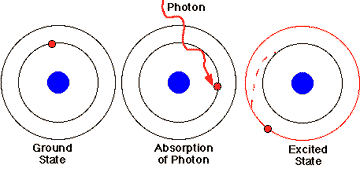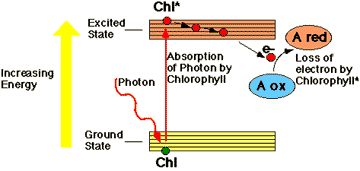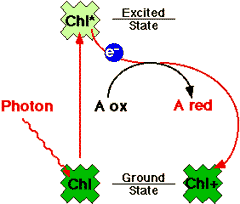

| Light energy is converted to chemical energy when a photochemically excited special chlorophyll molecule of the photosynthetic reaction center loses an electron, undergoing an oxidation reaction. |

|
| The conversion of light energy to chemical energy is summarized in the diagram to the right. Light energy from the absorption of a photon excites an electron of P680 (photosystem II) or P700 (photosystem I) to a higher energy level. The reducing power of the electron is increased approximately 1 volt. Within about a billionth of a second, the excited pigment molecule undergoes an oxidation reaction. There is a corresponding reduction reaction of an electron carrier in the thylakoid membrane. The oxidized pigment is subsequently reduced by accepting an electron from water (P680+ of photosystem II) or plastocyanin (P7600+ of photosystem I). A good analogy of the reaction centers is to a photovoltaic cell, that converts sunlight into an electrical current. |

|
http://www.biology.arizona.edu
All contents copyright © 1996. All rights reserved.